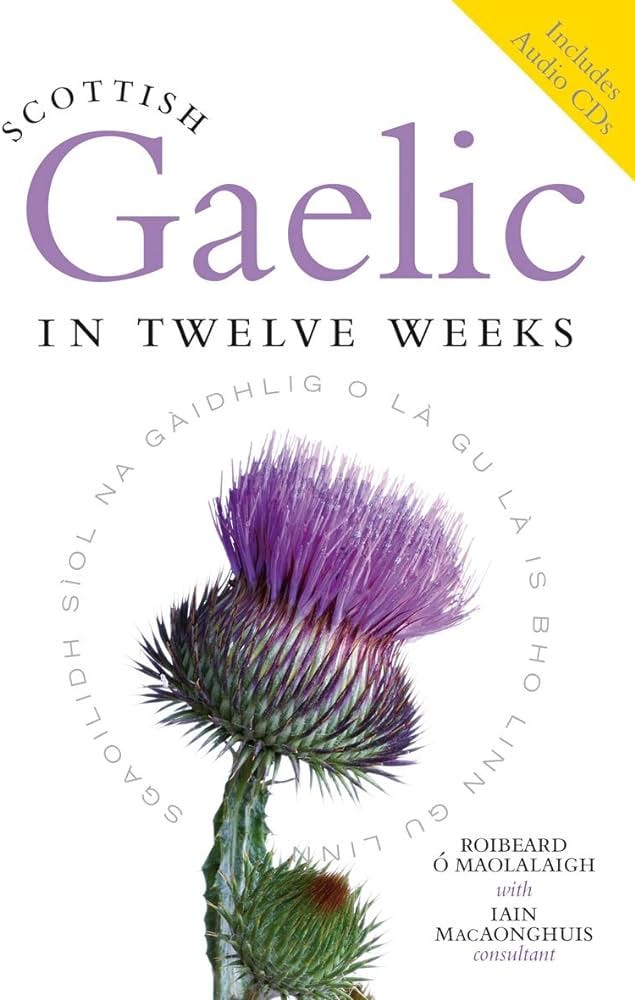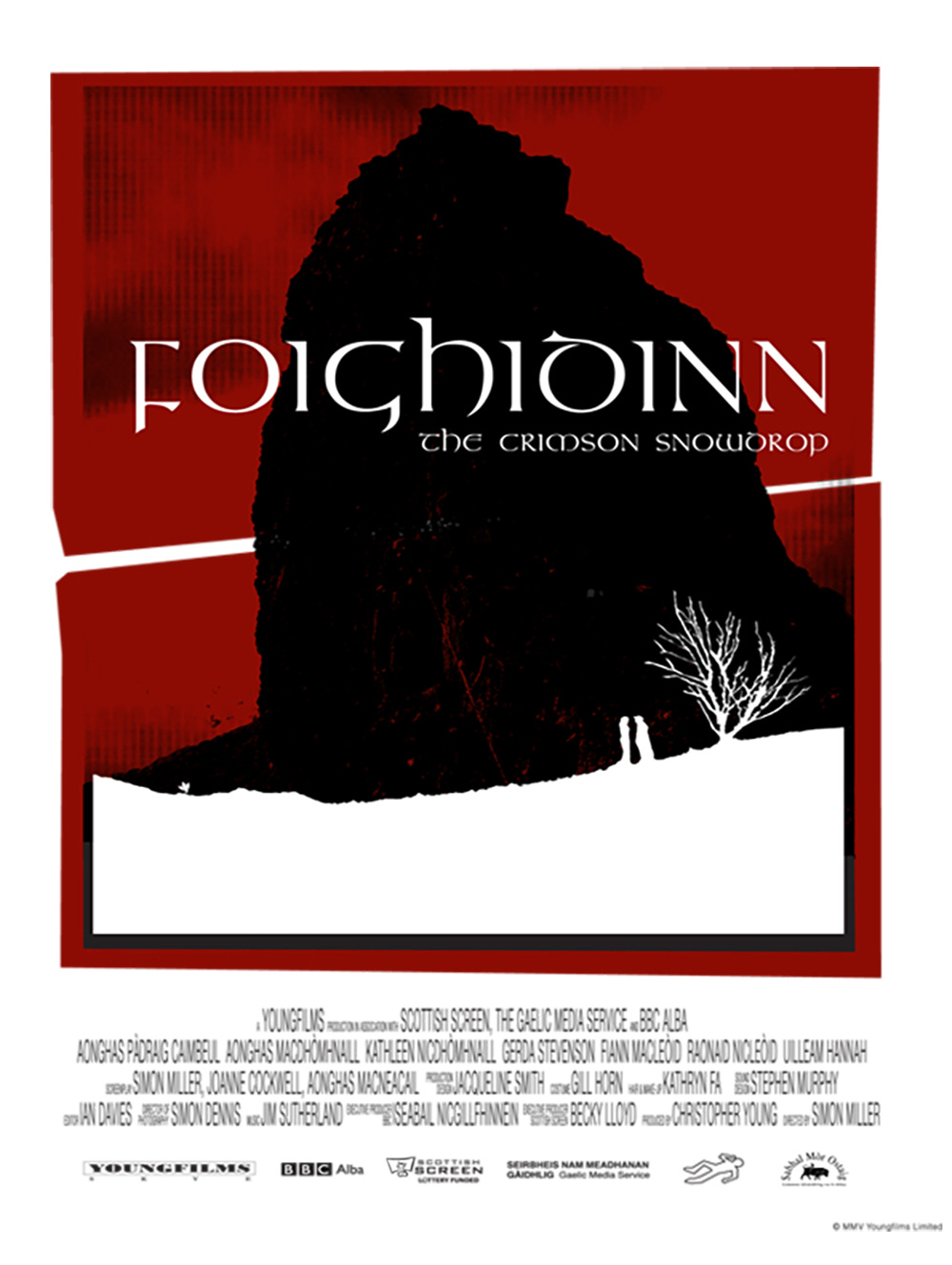The 5 Best Resources for Learning Gaelic
Books, Programs, and Other Media I have used to learn and keep this language alive
To piggyback off last week’s post discussing my personal history with learning Gaelic, I decided to share a comprehensive list of resources that I found instrumental in learning and acquiring Scottish Gaelic. Thankfully, the opportunities and resources for learning Gaelic outside of Scotland and Atlantic Canada are slowly growing and lists like this one likely will warrant constant updates over the years. The resources I am listing are ones that I personally have used and found great success with over the past decade of learning Gaelic by myself. I anticipate other learners and speakers will have their own input and I more than welcome them to comment their recommendations!
Please Note that these resources are for learning Scottish Gaelic (i.e., the Gaelic spoken in Scotland and Nova Scotia)! While it can be used to communicate with and understand the Irish language (Gaeilge) both languages have been on different tracks for many years.
1. Learngaelic.scot
Technically a whole plethora of resources, Learngaelic.scot is a great place for any level of learner for Scottish Gaelic. It not only provides lessons, practices materials, and a Gaelic-English dictionary but hosts Gaelic media from newsletters to podcasts to songs and shows purely in the language. This is invaluable for immersion as it makes you realize how dedicated native speakers and learners are to spreading the language across the internet to reach future generations and digitize previous ones.
For absolute beginners, I’d recommend the three following pages on the website to get started:
Speaking Our Language — I mentioned this show in last week’s post as a resource I stumbled upon when I was looking for more in-depth courses. Granted, I began watching it in the form of episodes uploaded to YouTube so it was only a matter of time before the copyright police started taking them down one by one. I was ecstatic to find all the episodes had been preserved on Learngaelic.scot and came with quizzes to help test watchers. In an age dominated by constant video media, I also feel like this would be an easy in for younger learners.
Little by Little (Beag air Bheag) — As it states on the page itself, this sections is “…a taste of Scottish Gaelic for absolute beginners.” One of the biggest things new learners to Gaelic are going to struggle with is completely unlearning all the conventions of the English language (I’m aware there are likely people from other cultures outside the anglosphere who wish to learn Gaelic but most of my readers at the time of this post are from English-speaking countries). Being able to acclimate to the language one word at a time is probably the best way to begin as separating oneself from how we have learned how sentences are formed and how letters are pronounced, especially if a learner has passed the language acquisition window.
Learn a Song — An education in Gaelic is completely lost if a learner doesn’t know any songs. Singing and poetry is integral to Gaelic culture as it has been a primary form of entertainment for as long as the language has existed. Even if you aren’t confident in your singing abilities, learn a song, even if you know you won’t be singing it at a cèilidh; every Gaelic-learner should have one song they can recite the lyrics to and understand by heart. This is also one aspect of learning Gaelic, I’ve noticed, that distinguishes itself from most other languages usually taught in schools; there are few, if any, opportunities to learn traditional songs in these classes unless a teacher is very dedicated to incorporating cultural education in addition to standardized learning objectives.
Although the page is listed as “Intermediate”, children who grow up speaking Gaelic will be exposed to songs from their time in the cradle, so it’s important to at least be familiar with this ancient custom. The three songs I would recommend for beginners to learn are the following: “Tha mi sgìth”, “'S toigh leam fhìn Buntàta 's Ìm”, and “Far am bi mi fhìn.”
2. Scottish Gaelic in Twelve Weeks
Another resource that helped me in my own journey was the book Scottish Gaelic in Twelve Weeks. This is a good book to have handy for most of your learning experience, especially at the beginning. The sections are presented more so how a standardized language-learning module would be set up. Most new copies include audio CDs that give complete walkthroughs of each section. One thing to note with this resource is that there will be a noticeable lack of feedback as you’re learning; since everything is prewritten and prerecorded, you will really have to dedicate yourself to learning and understanding everything the book and audio supplements present, in which case, having a study buddy may help you get more value out of this book. In any case, this would be the most ideal resource to carry with you on the go or commit to working through for at least an hour a day.
3. “The Crimson Snowdrop”
A fact about learning any language is that immersing yourself in media produced by native speakers will immensely help in the language acquisition process. It shows learners how languages are usually spoken beyond purely educational materials. “The Crimson Snowdrop” was the first Gaelic language film I watched several years into my language-learning journey. It is a darkly beautiful story filmed on location in the Isle of Skye that would be the basis of the feature-length Gaelic-language film Seachd: The Inaccessible Pinnacle. I have yet to see Seachd but I really enjoyed “The Crimson Snowdrop” and think of it often. I won’t say much about the plot here, so just check it out below!
4. Na Beanntaichean Gorma
As I said above with learning songs in Gaelic, another important part of Gaelic culture is storytelling. During my postgraduate coursework, I enrolled in a Scottish Gaelic folklore course where the collection Na Beanntaichean Gorma was one of the primary texts. It features the original Gaelic transcriptions alongside English translations. I challenged myself to read the stories first in Gaelic before looking at the English, which took a lot more time than was probably necessary for class readings but this book remains a great resource for when I want to keep my skills fresh.
5. The Gaelic College
(Although there are other online classes and immersion courses from other organizations in Scotland and even in the US, the Gaelic College is the only place I can attest to the quality of, having taken courses in outside of my undergraduate and graduate facilities for learning Gaelic.)
Located in St. Ann’s, Nova Scotia, The Gaelic College is one of the best places in North America to receive an in-person or remote education in Scottish Gaelic. My American readers may see the word “college” and think this is a four-year, post-secondary institution; since it’s in Canada, “college” doesn’t necessarily mean the same thing as colleges in the US, so think of this more like an educational center where people of all ages and skill levels can take courses in Gaelic language and culture (although certain courses can count towards higher education credit with certain Canadian universities). I have only taken online courses through the Gaelic College, one being a general intermediate course on speaking Gaelic and the other a course on how to write in Gaelic.
The Gaelic College hosts many year-round in-person classes, with special weekend events for Halloween and Christmas. The best in-person immersion course, I’ve been told, is An Cùrsa Bogaidh, a month-long course in May that has just about everything you could ask for when it comes to living with and using the language on a regular basis. If you’re available for four weeks in the spring, up for making the trip to Canada, and want to improve your Gaelic exponentially, then you absolutely cannot go wrong with this course.
Thanks for reading this week’s post! Are you a Gaelic-speaker or learner and have your own resources to recommend for others? Suggest them in the comments by hitting the button below!
Refer a friend to Senchas Claideb to receive special rewards, including a personalized Gaelic phrase and a free, original short story!
Follow me on other social media platforms!








